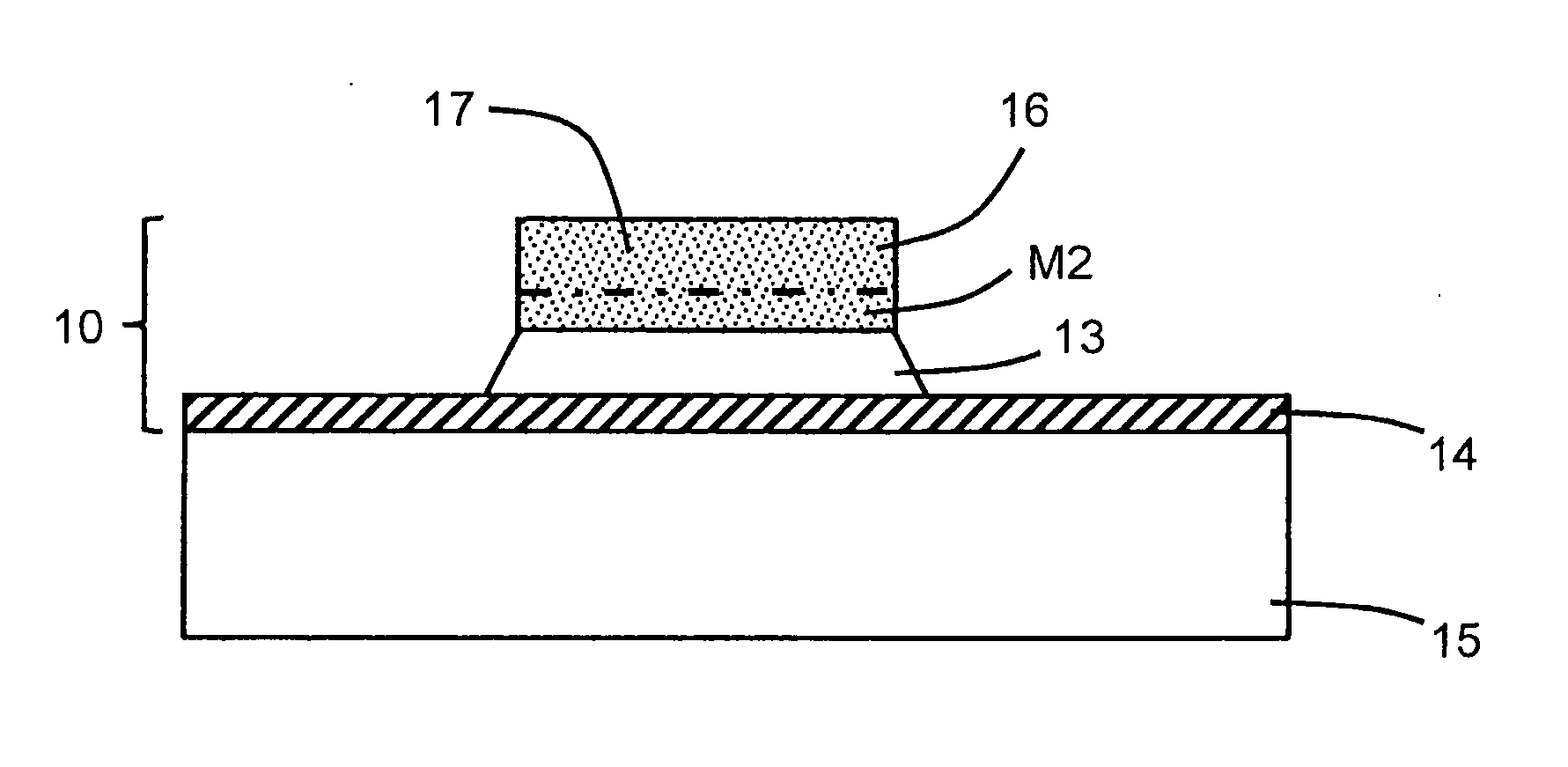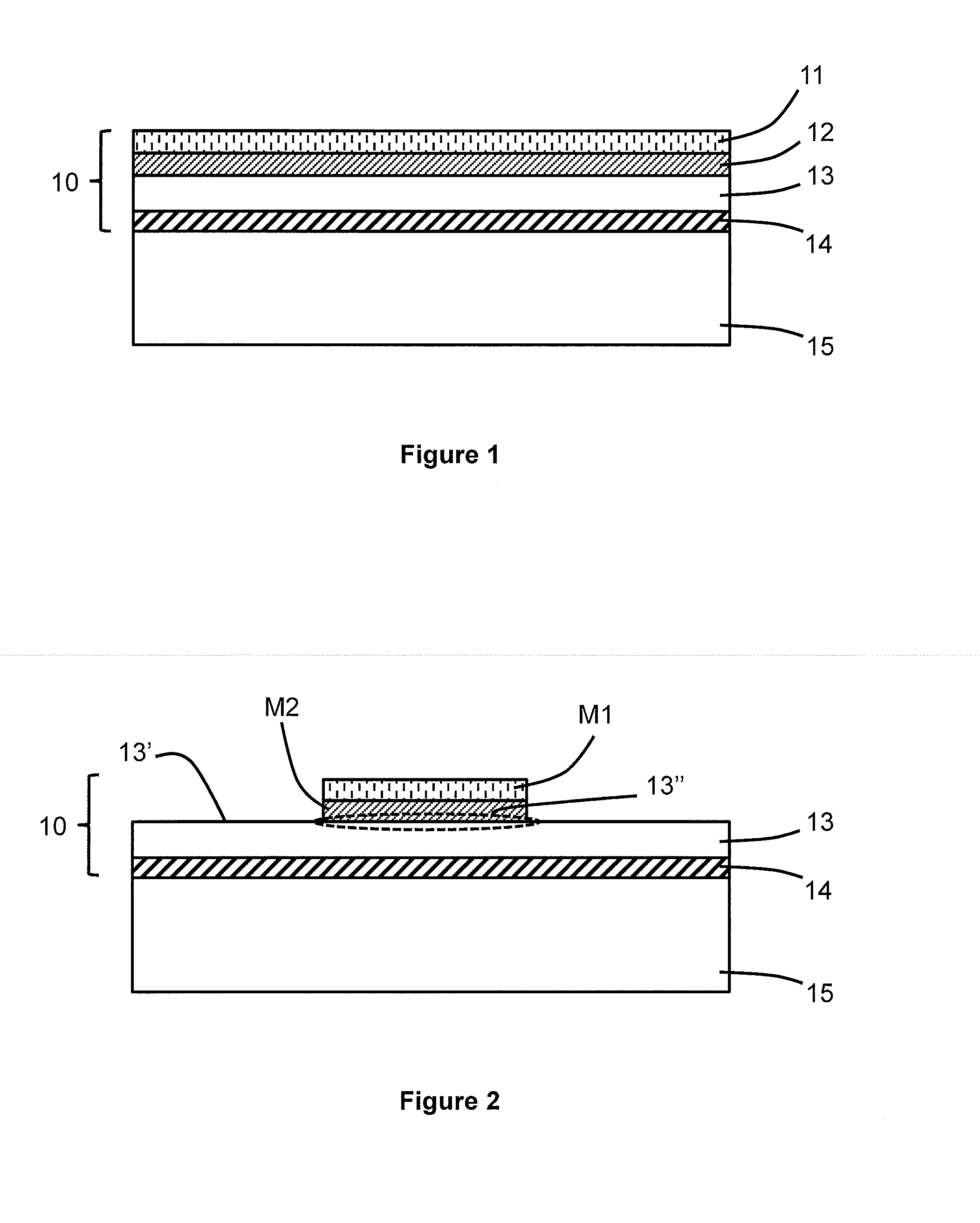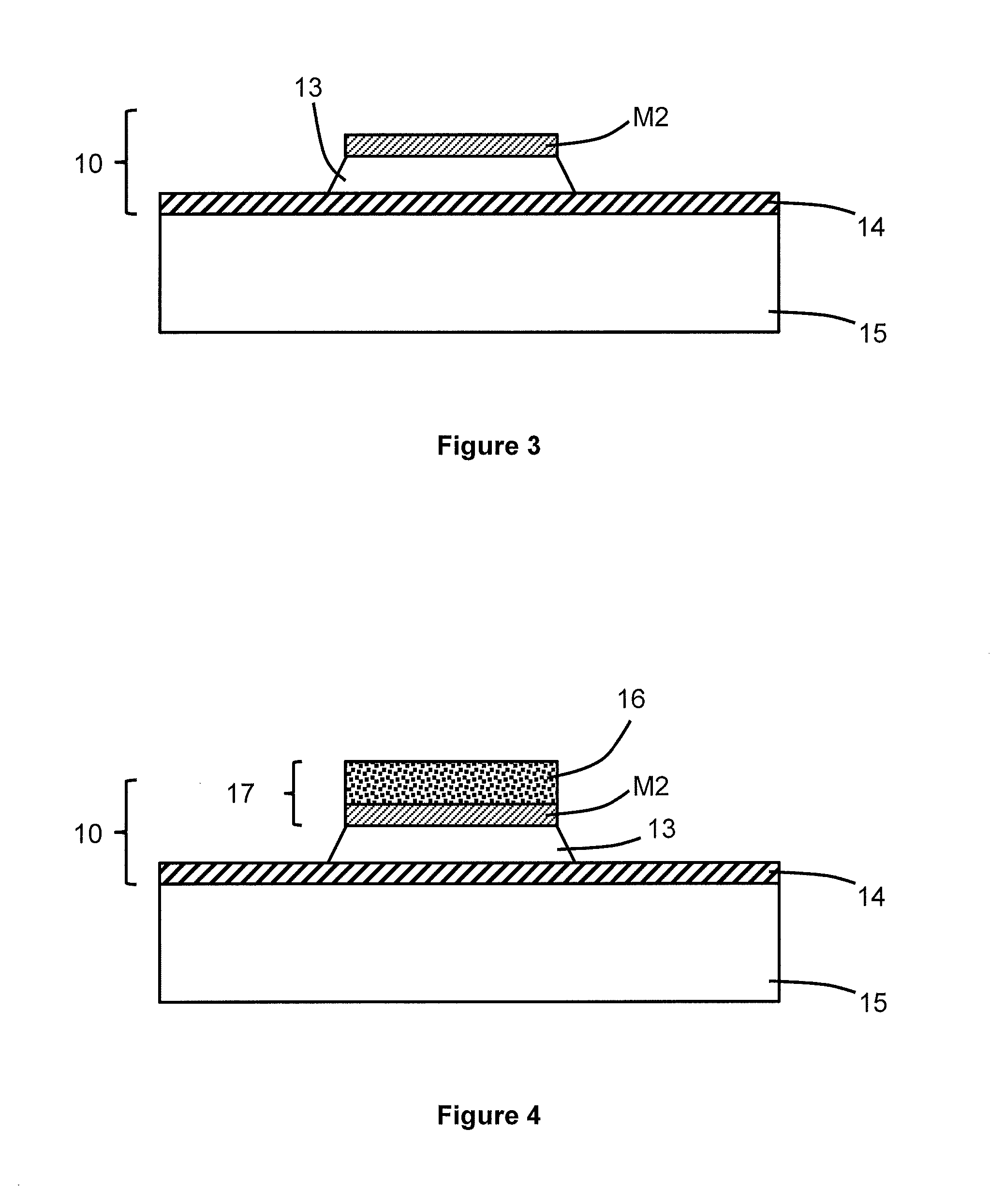Lithium microbattery fabrication method
- Summary
- Abstract
- Description
- Claims
- Application Information
AI Technical Summary
Benefits of technology
Problems solved by technology
Method used
Image
Examples
Embodiment Construction
[0039]According to a first embodiment illustrated in FIGS. 1 to 5, the method comprises provision of a stack 10 successively comprising a first layer 11 made from first material, a second layer 12 made from second material, a solid electrolyte layer 13 and a first electrode 14. In particular, thin layers 12 to 14 are designed to form a lithium microbattery.
[0040]Thin layers 11 to 14 can be deposited successively on a substrate 15 by conventional microelectronics industry techniques, for example by Physical Vapor Deposition (PVD), vacuum evaporation deposition, or Chemical Vapor Deposition (CVD). The thickness of thin layers 11 to 14 can vary between a few nanometres and a few tens of micrometres.
[0041]Substrate 15 is generally a silicon wafer able to comprise an integrated circuit, the substrate can also be made from glass or ceramic. Substrate 15 can be covered by a passivation layer, typically formed by silicon oxide, or by a bilayer formed by a layer of oxide and a layer of silic...
PUM
| Property | Measurement | Unit |
|---|---|---|
| Fraction | aaaaa | aaaaa |
| Concentration | aaaaa | aaaaa |
| Area | aaaaa | aaaaa |
Abstract
Description
Claims
Application Information
 Login to view more
Login to view more - R&D Engineer
- R&D Manager
- IP Professional
- Industry Leading Data Capabilities
- Powerful AI technology
- Patent DNA Extraction
Browse by: Latest US Patents, China's latest patents, Technical Efficacy Thesaurus, Application Domain, Technology Topic.
© 2024 PatSnap. All rights reserved.Legal|Privacy policy|Modern Slavery Act Transparency Statement|Sitemap



